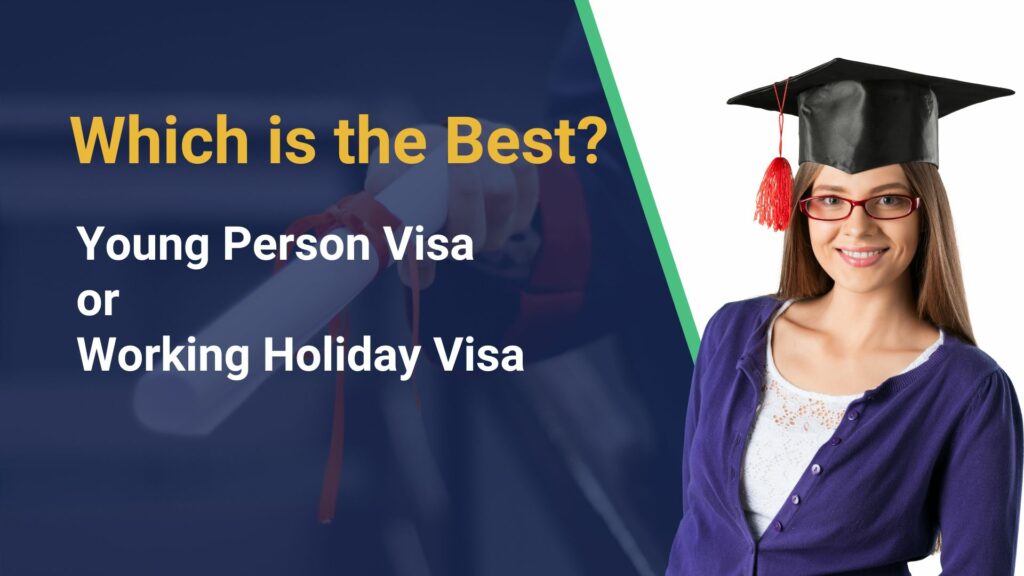Working Holiday Visa vs Young Person Visa in Australia – Aussie offers a variety of visa options for young individuals looking to explore the country. Not only for study purpose, but you can also gain work experience, and enjoy the life as citizen in the country.

Two popular visa categories that often cause confusion due to their similarities are the Working Holiday Visa and the Young Person Visa. While both visas target young people and offer similar benefits, there are key differences that applicants should be aware of. Let’s delve into the correlation between these two visa categories.
Working Holiday Visa
The Working Holiday Visa (subclass 417 and subclass 462) is perhaps the most well-known visa option for young people looking to travel, work, and study in Australia. This visa is available to individuals aged between 18 and 30 (some cases up to 35) from eligible countries.
- Work and Travel: Holders can work and travel in Australia for up to 12 months, with an option to extend in some cases.
- Study: Allows visa holders to study for up to 4 months.
- Multiple Entries: Allows multiple entries to and exits from Australia during the visa validity period.
Young Person Visa
The Young Person Visa, often referred to as the Working Holiday Maker Program, is another visa category designed for young individuals aged between 18 and 30 (some cases up to 35) from eligible countries.
- Work and Study: Similar to the Working Holiday Visa, allows visa holders to work and study in Australia for up to 12 months.
- Single or Multiple Entries: Depending on the visa subclass, it may offer single or multiple entries to Australia.
- Potential for Extension: Some visa subclasses under the Young Person Visa category may allow for a second or third-year extension under certain conditions.
Also Read: 7 Essential Preparation Before Applying Working Holiday Visa Australia
Correlation between the Two Visas
Both the Working Holiday Visa and the Young Person Visa share common objectives and benefits, such as:
- Work Opportunities: Both visas enable young individuals to gain valuable work experience in Australia, helping them fund their travels and develop new skills.
- Cultural Exchange: Both visas offer a unique opportunity for cultural exchange, allowing visa holders to immerse themselves in the Australian way of life and interact with locals.
- Travel Flexibility: Both visas provide the freedom to travel and explore Australia, from its bustling cities to its stunning natural landscapes.
Differences Between the Two Visas
While the Working Holiday Visa and the Young Person Visa have many similarities, there are some key differences that applicants should be aware of:
- Eligibility Criteria: While both visas target young individuals from eligible countries, there may be slight variations in the eligibility criteria, such as age limits and country-specific requirements.
- Visa Subclasses: The Working Holiday Visa has two subclasses (subclass 417 and subclass 462), each with its own set of eligibility criteria and conditions. The Young Person Visa may also consist of different subclasses, each offering unique benefits and requirements.
- Extension Opportunities: The Young Person Visa may offer more flexibility in terms of visa extensions, allowing visa holders to stay in Australia for a longer period under certain conditions.
In summary, while the Working Holiday Visa and the Young Person Visa in Australia share many similarities and are often used interchangeably, they are distinct visa categories with their own set of eligibility criteria, benefits, and conditions. It’s essential for prospective applicants to understand the differences between these two visa options and choose the one that best suits their individual needs and objectives. Whether you’re looking to work, study, or simply explore Australia, both visas offer a fantastic opportunity to experience the Land Down Under like never before.



